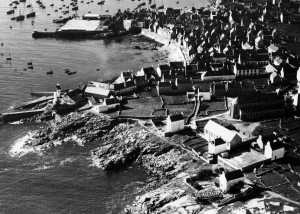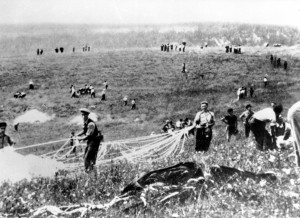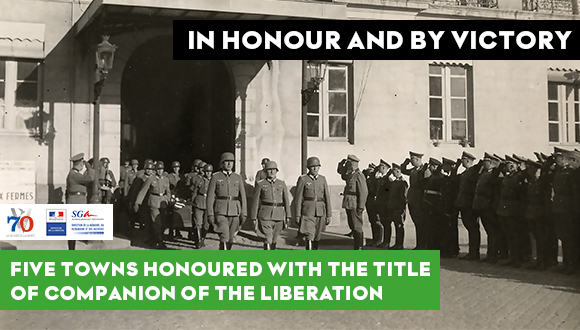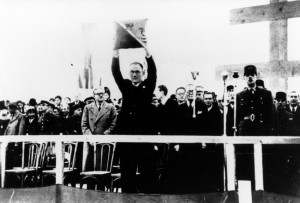In France, awarding a distinction to a regional authority is an old tradition dating back to the First Empire. A town may be honoured when the evidence of the actions led by a large part of its population, sometimes victim of collective oppression, favours this decision.
 When General de Gaulle created the Order of the Liberation in November 1940, he took in consideration the fact that the insignia could also be awarded to civilian communities. Only five French towns were honoured with the title of “Compagnon de la Liberation” – “Companion of the Liberation”: Nantes, Grenoble, Paris, Vassieur-en-Vercors and the Isle of Sein.
When General de Gaulle created the Order of the Liberation in November 1940, he took in consideration the fact that the insignia could also be awarded to civilian communities. Only five French towns were honoured with the title of “Compagnon de la Liberation” – “Companion of the Liberation”: Nantes, Grenoble, Paris, Vassieur-en-Vercors and the Isle of Sein.
One of the characteristics of the Order of the Liberation is that it is destined to disappear when the last Companion passes away. In order to ensure the continuity of the Order, the National Council of the “Companions of the Liberation” communities was created in November 2012. This Council is composed of the last living Companions of the Liberation, a national delegate and the mayors in office of the five towns honoured with the title of Companion of the Liberation and that will never disappear. Today, the National Council of the “Companions of the Liberation” communities is responsible for the overall direction of the Order of the Liberation and the preservation of its future.
is that it is destined to disappear when the last Companion passes away. In order to ensure the continuity of the Order, the National Council of the “Companions of the Liberation” communities was created in November 2012. This Council is composed of the last living Companions of the Liberation, a national delegate and the mayors in office of the five towns honoured with the title of Companion of the Liberation and that will never disappear. Today, the National Council of the “Companions of the Liberation” communities is responsible for the overall direction of the Order of the Liberation and the preservation of its future.
Credits : © the Musée de l’Ordre de la Liberation / All rights reserved. Cover photo : Karl Hotz’s funeral. © Archives municipales de Nantes.




Ajouter un commentaire